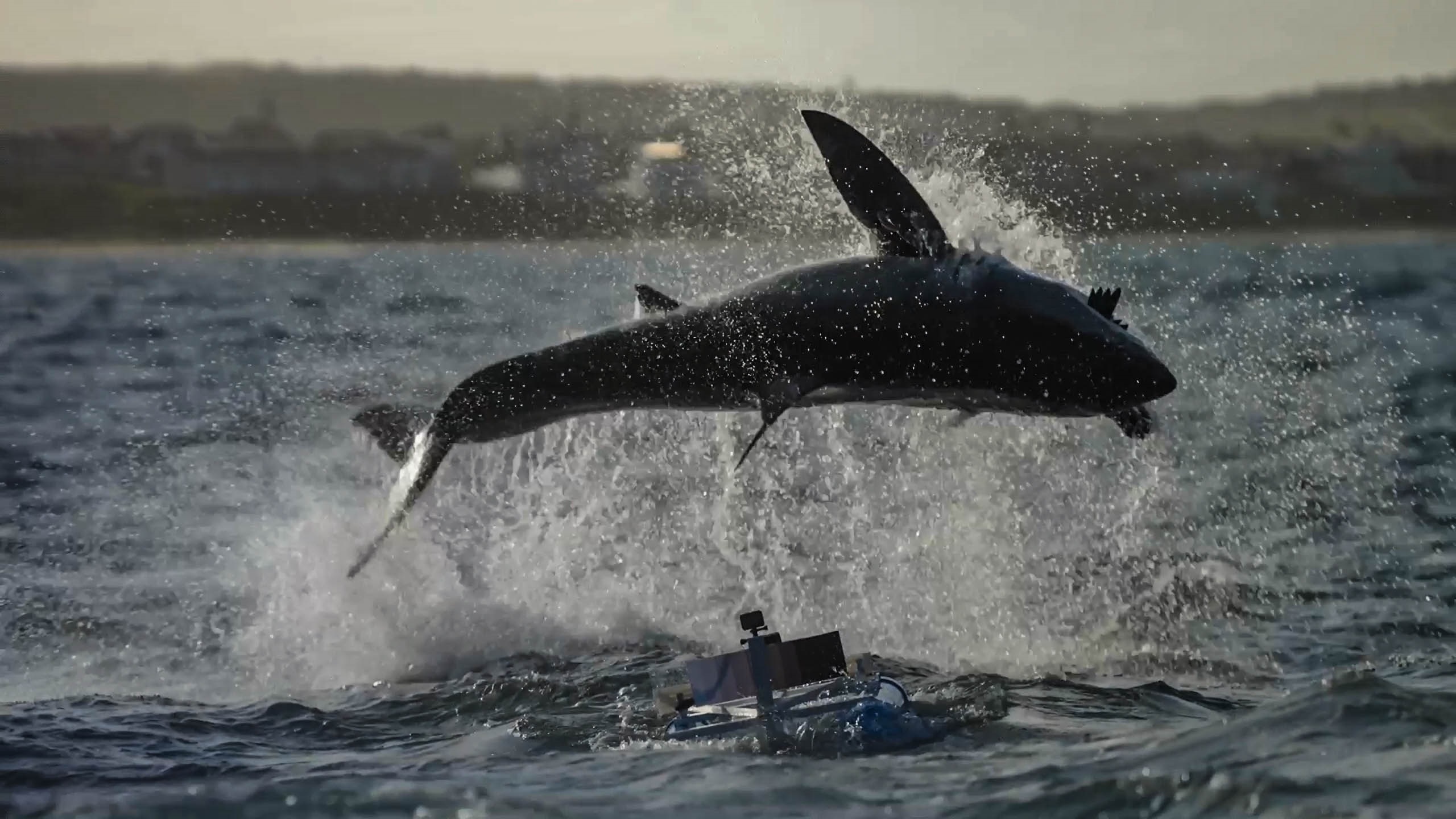The great white shark changes colour when it attacks. National Geographic Explorer and WUR PhD student Gibbs Kuguru has made a documentary about this phenomenon.
Explorers still exist, and one of them is Gibbs Kuguru from Kenya, who has been a PhD student at WUR for two years now. He was officially awarded the status of National Geographic Explorer in June. An appointment that enables him to go exploring the world in search of a good story at the expense of the renowned institution. And for him, that means stories about sharks.
Gibbs Kuguru has been studying sharks for 10 years. His parents actually intended for him to become a doctor. ‘I studied medicine in the US. But as I went along, I realized that it wasn’t what I really wanted to do. I wasn’t happy doing what I did. My study advisor saw that too and handed me a flyer when I graduated from pre-med, the first four-year phase of the training, saying: “This is up your street”. It was a job in South Africa on a boat, taking tourists into the sea in a cage to see great white sharks.’
‘I wasn’t a diver, I couldn’t even swim properly and – like most people – I was scared of sharks,’ he says. ‘But the choice was to continue my studies or to go to the sharks. I opted for the sharks.’ And his fear quickly evaporated. ‘Everything changed from the first time I saw a shark. Sure, it’s a predator, untamed and fierce, but it is also an incredibly beautiful animal, worthy of our respect. And actually much less dangerous than, for example, a lion when you come face to face.’
That’s as long as you know how to behave. ‘Just last week, in South Africa, I fell out of my kayak. There I was, in the water with lots of great white sharks around me. My first reaction was: shit! But my training took over. Don’t react like prey. Show that you’re not panicking or in distress. Don’t flounder. So I grabbed my paddle, swam calmly back to the kayak and climbed in. Nothing happened. But I did paddle back to the beach very fast.’
Colour board
Kuguru was in South Africa to film a documentary about a remarkable phenomenon: the way great white sharks change colour when hunting. This phenomenon has never been studied before. Kuguru: ‘My former boss on the boat once said: “Hey, that shark we just saw seems to have gone paler”. I hadn’t noticed it and I thought: he’s crazy. But later I heard similar stories from other people.’ So Kuguru and his shark mentor Ryan Johnson decided to research this, and got the backing of National Geographic. ‘Things like colour change makes for an appealing story, of course’.
The experimental set-up the researchers developed is as simple as it is spectacular. They lure sharks with a fake seal towed on a rope behind the boat. A colour board with shades of grey is mounted on a floating rack in front of the seal. When the shark jumps out of the water to strike, it is photographed from the boat. The set-up makes smart use of the behaviour of the sharks, which jump out of the water when they attack, showing themselves in all their glory. ‘Only the great white sharks in South Africa do that. It’s amazing, if you think about it. They don’t do it anywhere else. Somehow, this population has developed this behaviour. They grab their prey and jump.’
Fight or flight
Kuguru has many dozens of photographs of such attacks, which he never tires of. ‘The ferocity of such an attack, those teeth, the impact on the prey. When you see it, you can’t sit still. YES, it happened again!’ And it turns out that the perceived change of colour is real, and Kuguru even reckons to understand the mechanism behind it. ‘I think it’s an unconscious response of the nervous system, just like blushing. Our hypothesis is that different hormones induce this colour change. Adrenaline, for example, is released when the shark feels threatened or scared.’ This is still a hypothesis at this stage, but one that is supported by lab tests, in which skin tissue from the great white shark was exposed to adrenaline. This produced the same colour change, says Kuguru.
So the colour change is an effect of the age-old fight-or-flight response. Kuguru: ‘Sometimes sharks bash into the boat because they can’t see their prey very well. That startles them and they go paler and then dive to the bottom of the ocean to hide. This colour change helps them hide: their muted colour pattern matches the colour of the deep ocean. So I think it is a natural adaptation that sharks have developed to have an evolutionary advantage. But much of this is still hypothetical.’
Leucism
Gibbs Kuguru is a PhD student working on the genetic basis of leucism in blacktip reef sharks in the Maldives. The condition leads to spotted depigmentation of the skin. Pigment cells (melanocytes) play a role in this, as they do in in the colour change observed in the great white shark. In addition to the genomics of it, Kuguru is also investigating the effect of leucism on the sharks’ chances of survival.

 The white shark jumps out of the water as it attacks. The researchers seize the opportunity to take a photo of the shark’s belly and of the colour board, to compare colours. In this photo, the shark is demolishing the research equipment (not deliberately). Photo: Roller Coaster Road Productions
The white shark jumps out of the water as it attacks. The researchers seize the opportunity to take a photo of the shark’s belly and of the colour board, to compare colours. In this photo, the shark is demolishing the research equipment (not deliberately). Photo: Roller Coaster Road Productions 

